Abstract
The interpretation of in vitro susceptibility tests of Haemophilus influenzae performed by the agar or broth dilution methods with Levinthal enrichment was found to be markedly influenced by the production of spheroplasts by this species. Using an inoculum of 107 organisms/ml, this phenomenon was frequently evident macroscopically as a haziness on agar substrates and in broths containing cell wall-acting agents, such as ampicillin, cephalothin, and penicillin, but was not noted with chloramphenicol. Phase-contrast microscopic examination of the haze from these sources revealed numerous spherical bodies in contrast to the typical cocco-bacillary forms observed in growth controls. With this inoculum size, minimal bactericidal concentrations could not be determined since subculture of 0.1 ml of the hazy broths or the surface haze onto chocolate agar resulted in most instances in the development of a small number of colonies which, upon smear and gram stain, revealed typical Haemophilus morphology. An inoculum of 104 organisms/ml abolished the haziness on agar surfaces and in broths and resulted in clear-cut end points. Also, although spherical bodies were still present, they were distinctly less in number as contrasted to tests performed with an inoculum of 107 organisms/ml. It is recommended that minimal inhibitory concentration end points in antibiotic susceptibility tests be determined by microscopic, rather than macroscopic, observation of the growth milieu to determine the presence or absence of morphologically typical bacilli which, when observed, is indicative of true in vitro resistance.
Full text
PDF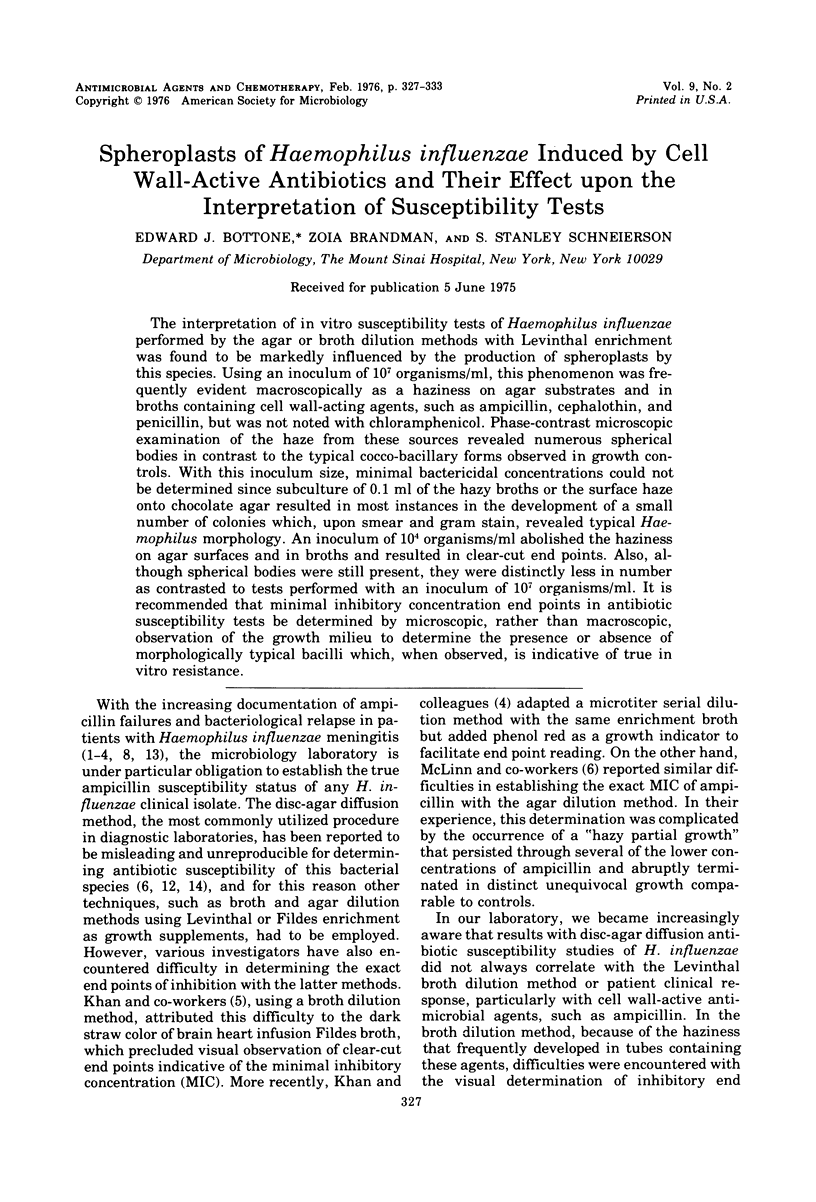
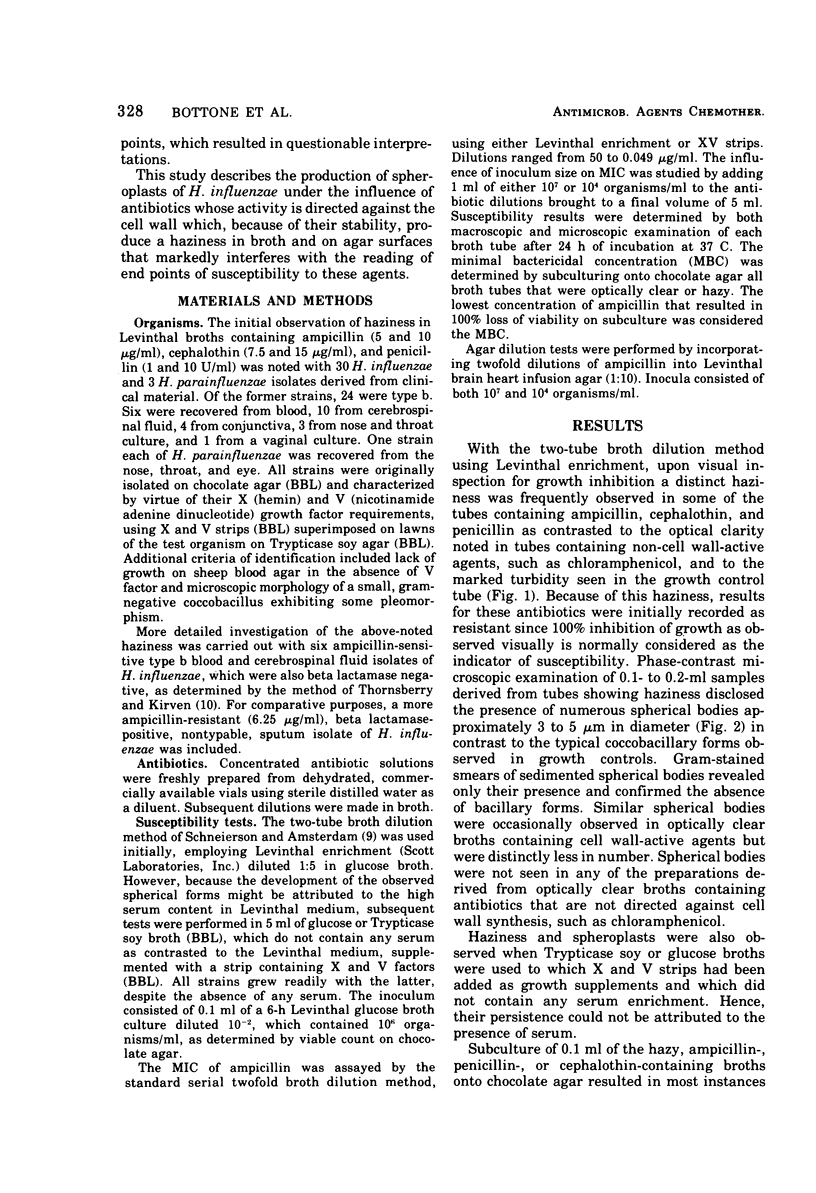
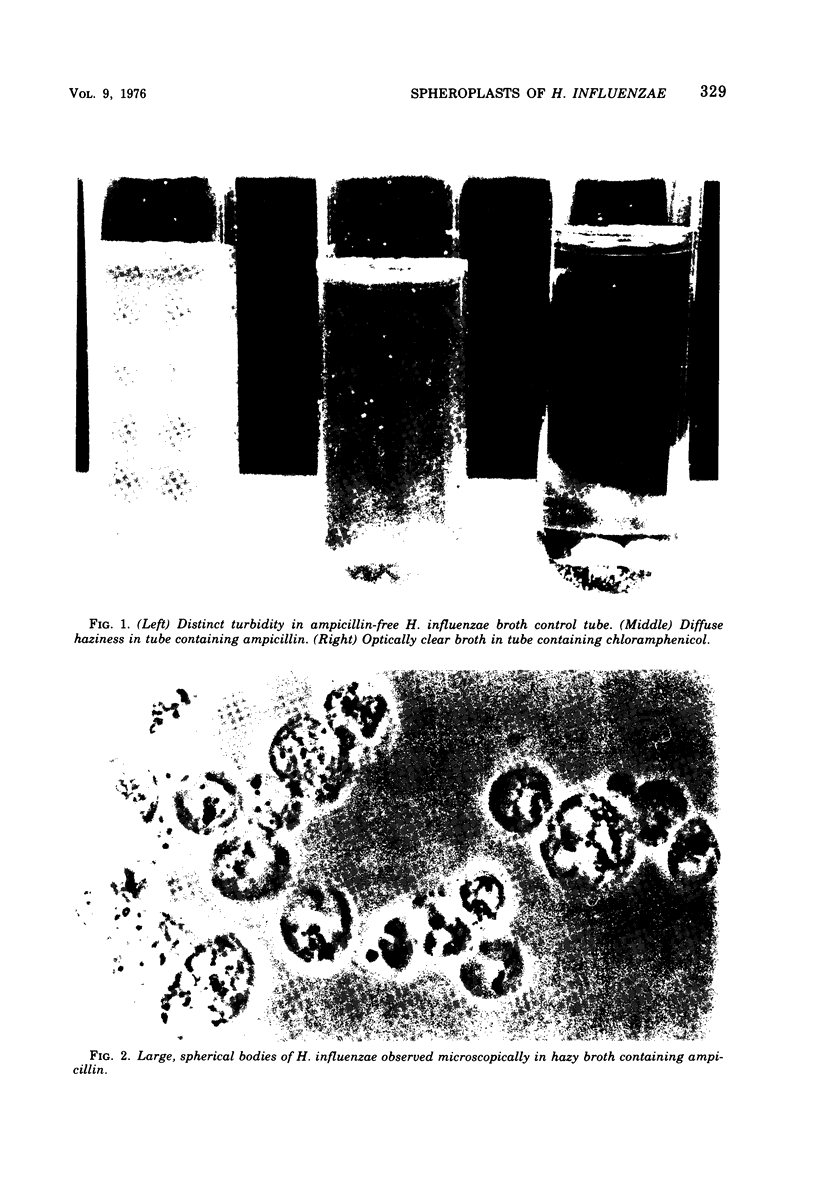
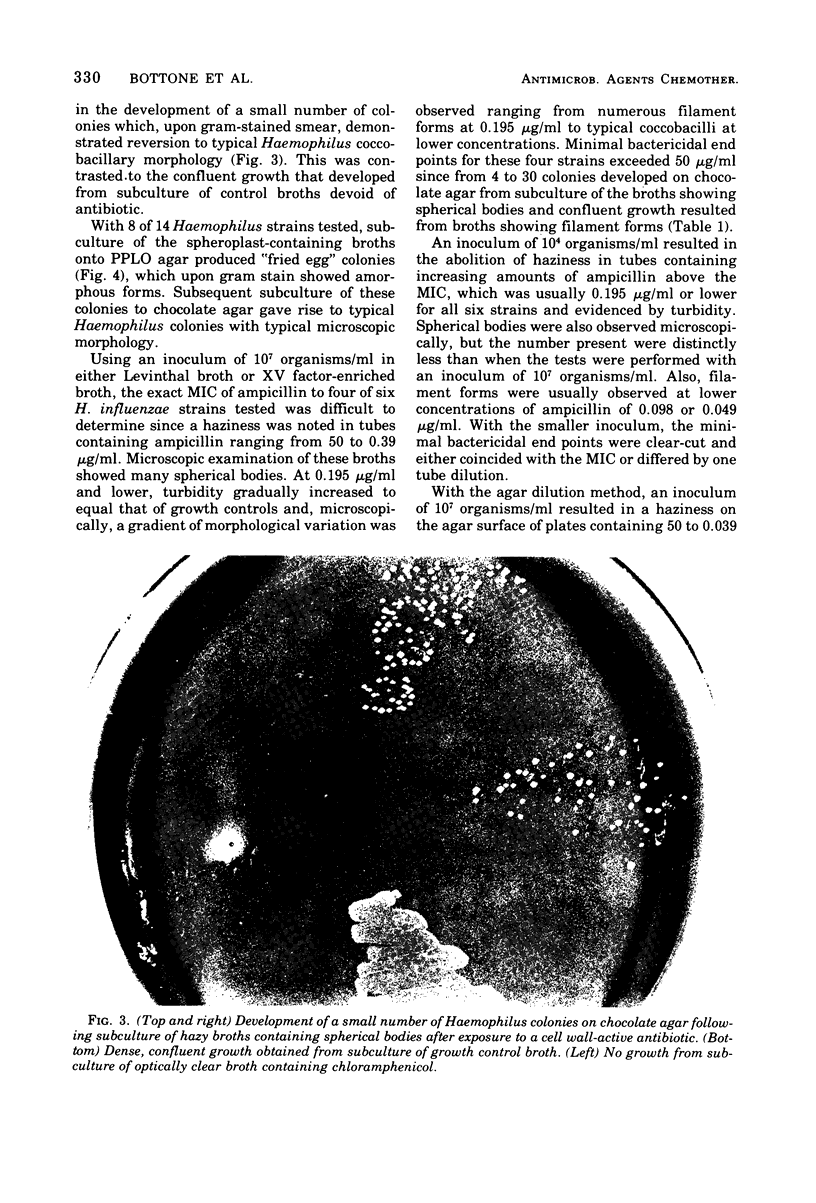
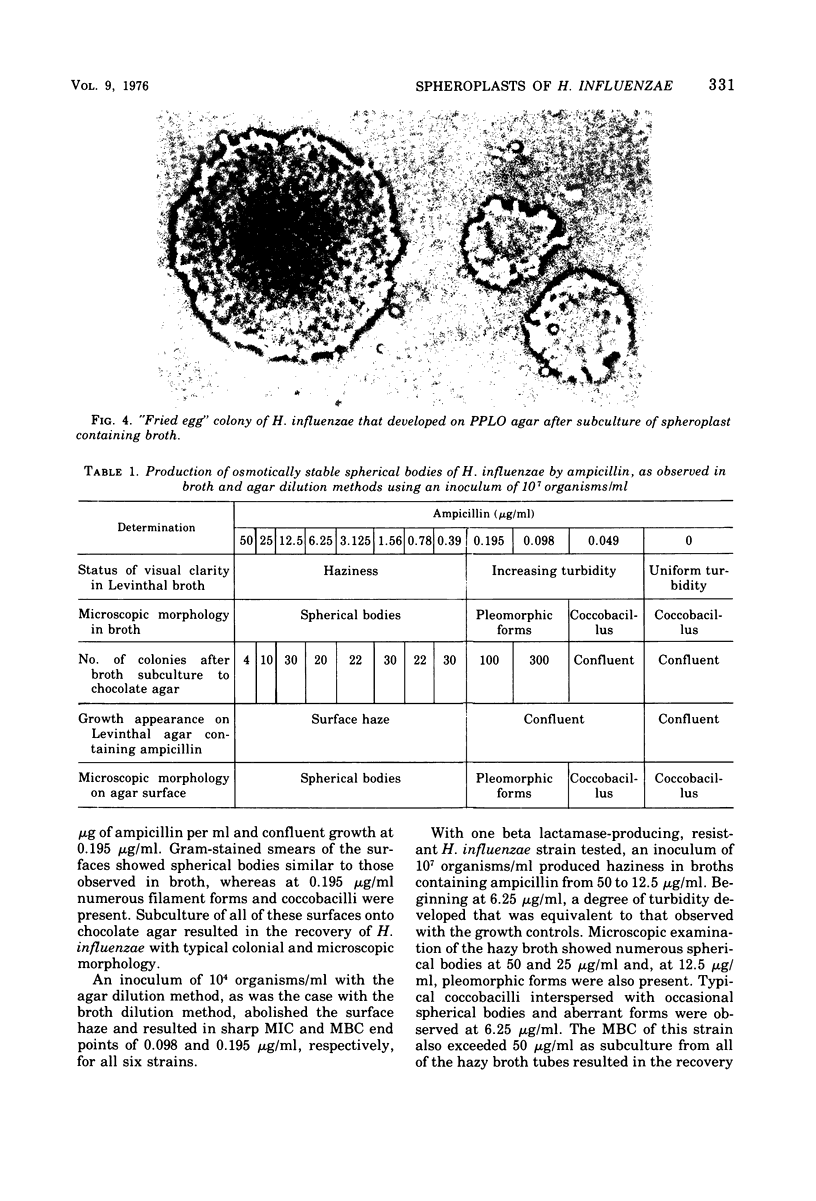
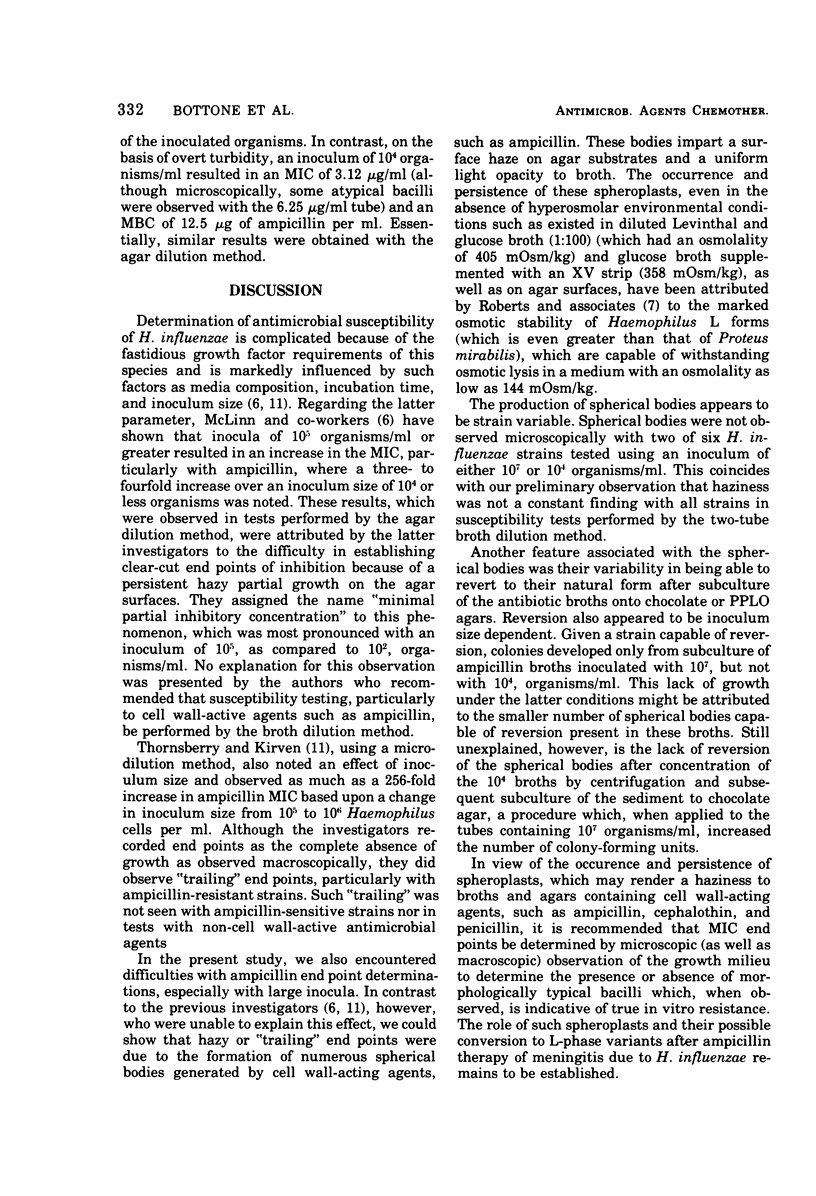
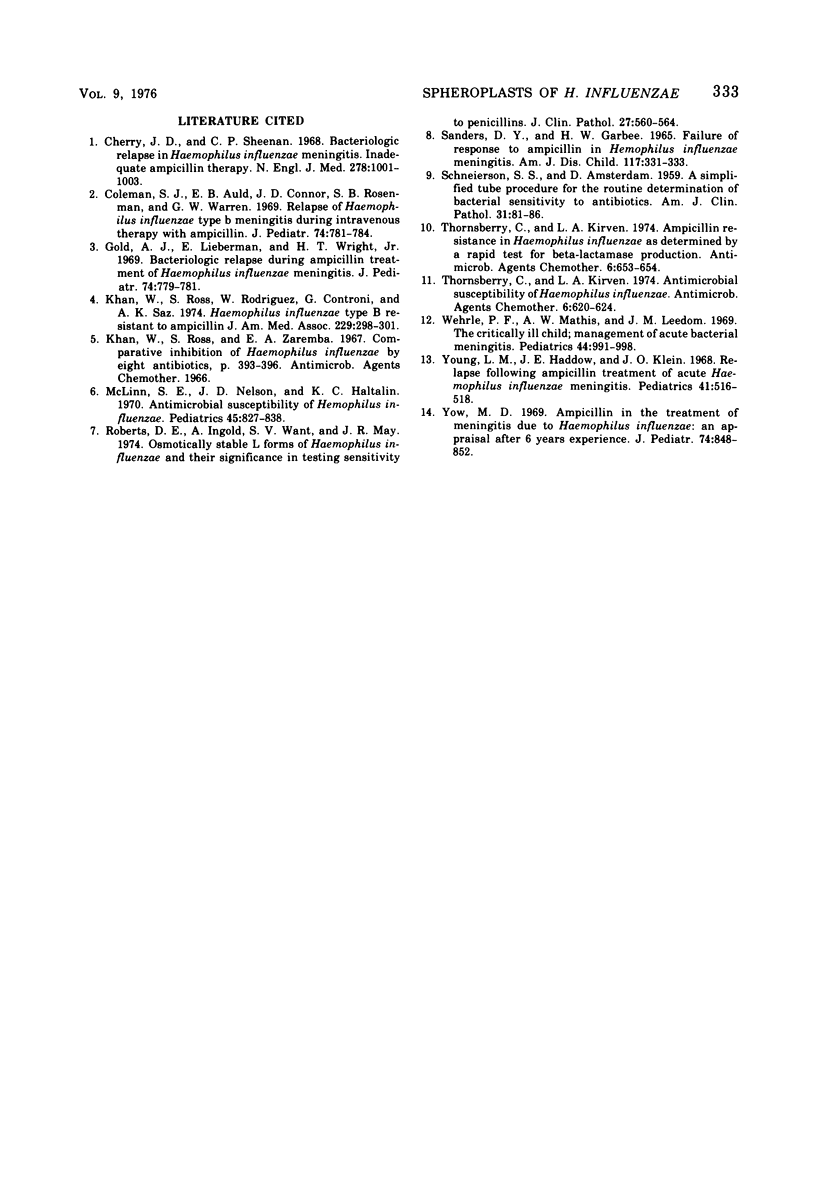
Images in this article
Selected References
These references are in PubMed. This may not be the complete list of references from this article.
- Cherry J. D., Sheenan C. P. Bacteriologic relapse in Haemophilus influenzae meningitis. Inadequate ampicillin therapy. N Engl J Med. 1968 May 2;278(18):1001–1003. doi: 10.1056/NEJM196805022781808. [DOI] [PubMed] [Google Scholar]
- Coleman S. J., Auld E. B., Connor J. D., Rosenman S. B., Warren G. H. Relapse of Hemophilus influenzae type b meningitis during intravenous therapy with ampicillin. J Pediatr. 1969 May;74(5):781–784. doi: 10.1016/s0022-3476(69)80142-3. [DOI] [PubMed] [Google Scholar]
- Gold A. J., Lieberman E., Wright H. T., Jr Bacteriologic relapse during ampicillin treatment of Hemophilus influenzae meningitis. J Pediatr. 1969 May;74(5):779–781. doi: 10.1016/s0022-3476(69)80141-1. [DOI] [PubMed] [Google Scholar]
- Khan W., Ross S., Rodriguez W., Controni G., Saz A. K. Haemophilus influenzae type B resistant to ampicillin. A report of two cases. JAMA. 1974 Jul 15;229(3):298–301. [PubMed] [Google Scholar]
- May J. R., Roberts D. E., Ingold A., Want S. V. Osmotically stable L forms of Haemophilus influenzae and their significance in testing sensitivity to penicillins. J Clin Pathol. 1974 Jul;27(7):560–564. doi: 10.1136/jcp.27.7.560. [DOI] [PMC free article] [PubMed] [Google Scholar]
- McLinn S. E., Nelson J. D., Haltalin K. C. Antimicrobial susceptibility of Hemophilus influenzae. Pediatrics. 1970 May;45(5):827–838. [PubMed] [Google Scholar]
- SCHNEIERSON S. S., AMSTERDAM D. A simplified tube procedure for the routine determination of bacterial sensitivity to antibiotics. Am J Clin Pathol. 1959 Jan;31(1):81–86. doi: 10.1093/ajcp/31.1_ts.81. [DOI] [PubMed] [Google Scholar]
- Sanders D. Y., Garbee H. W. Failure of response to ampicillin in Hemophilus influenzae meningitis. Am J Dis Child. 1969 Mar;117(3):331–333. doi: 10.1001/archpedi.1969.02100030333016. [DOI] [PubMed] [Google Scholar]
- Thornsberry C., Kirven L. A. Ampicillin resistance in Haemophilus influenzae as determined by a rapid test for beta-lactamase production. Antimicrob Agents Chemother. 1974 Nov;6(5):653–654. doi: 10.1128/aac.6.5.653. [DOI] [PMC free article] [PubMed] [Google Scholar]
- Thornsberry C., Kirven L. A. Antimicrobial susceptibility of Haemophilus influenzae. Antimicrob Agents Chemother. 1974 Nov;6(5):620–624. doi: 10.1128/aac.6.5.620. [DOI] [PMC free article] [PubMed] [Google Scholar]
- Wehrle P. F., Mathies A. W., Jr, Leedom J. M. The critically ill child: management of acute bacterial meningitis. Pediatrics. 1969 Dec;44(6):991–998. [PubMed] [Google Scholar]
- Young L. M., Haddow J. E., Klein J. O. Relapse following ampicillin treatment of acute Hemophilus influenzae meningitis. Pediatrics. 1968 Feb;41(2):516–518. [PubMed] [Google Scholar]






